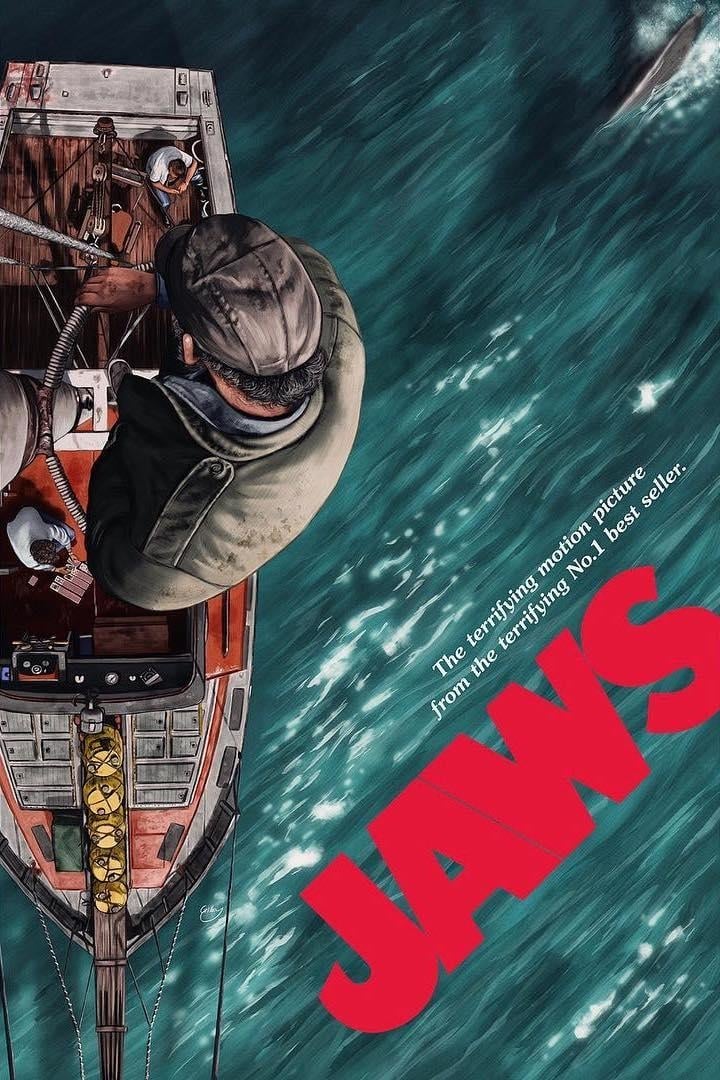Relive the Thrill: Why the 1975 Jaws Movie Is a Cinematic Masterpiece. The film, directed by Steven Spielberg, has become an iconic piece of cinematic history, captivating audiences worldwide with its suspenseful narrative and groundbreaking special effects. It's not just about the shark; it's about the journey, the characters, and the sheer brilliance in storytelling that continues to resonate with viewers decades later.
Jaws (1975) is more than just a horror movie; it's a cultural phenomenon that redefined summer blockbusters and set new standards for the film industry. With its gripping storyline, unforgettable performances, and a score that became synonymous with suspense, this film remains a timeless classic. As we delve deeper into what makes Jaws such a masterpiece, let's explore some of its most memorable elements.
Robert Shaw's Iconic Indianapolis Speech
One of the most celebrated scenes in cinematic history comes from Robert Shaw's monologue in Jaws. His portrayal of Quint, the grizzled fisherman haunted by his past, delivers a chilling account of the sinking of the USS Indianapolis. This speech adds depth to the character, showcasing his vulnerability and the scars left by war. Shaw’s performance brings authenticity and emotion, making this moment unforgettable.
Shaw's dialogue recounts how a Japanese submarine attacked the ship during World War II, leaving hundreds stranded at sea. His vivid description paints a harrowing picture of survival against all odds, emphasizing the psychological toll of trauma. Through Shaw's powerful delivery, audiences are drawn into Quint's world, feeling the weight of his experiences.
This scene serves as a pivotal point in the film, shifting the focus from mere action to emotional resonance. By humanizing Quint, Shaw elevates the story beyond its surface-level premise, creating layers of complexity that enrich the overall narrative. His monologue remains one of the film's crowning achievements, cementing its place in movie lore.
The Timeless Appeal of the Jaws Poster
The classic poster of Jaws, painted by Jason Prouty, captures the essence of the film with striking imagery. Featuring a great white shark lurking beneath a helpless swimmer, it encapsulates the terror and suspense central to the movie. Fifty years after its release, the design continues to inspire admiration, even being recreated on murals and pools as tributes to the film's legacy.
Prouty's artwork resonates with fans who appreciate both the artistry and nostalgia associated with the original release. The anniversary celebrations highlight the enduring appeal of Jaws, drawing attention to its continued relevance in popular culture. Fans celebrate the film through creative expressions like pool paintings, proving that its impact extends far beyond the screen.
Such artistic interpretations reflect the communal connection people feel towards Jaws, transcending generations. Whether viewed as a piece of art or a symbol of cinematic greatness, the poster embodies the spirit of adventure and fear that defines the movie experience. Its iconic status underscores why Jaws remains beloved by audiences worldwide.
Opening Day Memories
For many, watching Jaws on opening day in 1975 was a transformative experience. Mark Mason recalls stepping into the West End auditorium as an eleven-year-old, accompanied by parents who shared a passion for cinema. His mother's interest in scary movies likely influenced their choice to see Jaws, adding personal significance to the occasion.
This memory highlights the communal aspect of attending films during that era. Families gathered together to enjoy the magic of the big screen, creating lasting impressions. The cold winter setting contrasts sharply with the tropical Amity Island backdrop, enhancing the escape provided by the film. Such recollections underscore the power of movies to transport viewers to different worlds.
Mason's account illustrates how Jaws left an indelible mark on those who witnessed it firsthand. Beyond thrilling plotlines and impressive visuals, it fostered connections between individuals sharing similar interests. These early encounters often shape lifelong affections for certain films, explaining why Jaws holds such special places in so many hearts.
Quotable Moments from Jaws
A collection of memorable quotes from Jaws showcases the wit and wisdom embedded within its script. Lines like You're gonna need a bigger boat have entered common parlance, becoming part of everyday conversation. Each quote reflects the distinct personalities of the characters while advancing the storyline effectively.
Grayson Rogers compiles these gems, celebrating the linguistic artistry behind them. From tense exchanges between Brody and Hooper to Quint's philosophical musings, every line contributes meaningfully to the film's atmosphere. These snippets reveal much about the relationships among the trio and their evolving perspectives throughout the adventure.
By highlighting favorite lines, fans engage deeply with the material, finding joy in revisiting cherished moments. Quotes serve as shorthand references to larger themes explored in the movie, allowing enthusiasts to connect instantly over shared appreciation. They exemplify why Jaws endures as a touchstone for quality filmmaking.
Jaws: A Study in Suburban Horror
Setting Jaws in a seemingly idyllic seaside town amplifies its horror elements. The juxtaposition of tranquility with impending doom creates tension that keeps viewers captivated. In exploring suburban settings, filmmakers tap into universal fears tied to safety and security, turning familiar environments into arenas of dread.
Amity Island represents the quintessential small-town America where unexpected danger disrupts daily life. This disruption challenges residents' assumptions about control and order, forcing them to confront vulnerabilities they'd rather ignore. Through Spielberg's direction, the audience experiences this transformation alongside the characters, heightening engagement.
By grounding the narrative in relatable circumstances, Jaws achieves universality, appealing across demographics. Its exploration of external threats invading personal spaces speaks to primal anxieties, ensuring its relevance persists over time. Thus, the film succeeds not only as entertainment but also as commentary on human resilience amidst adversity.

